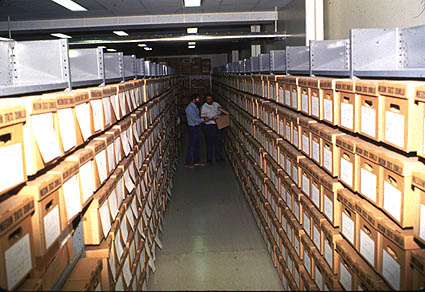
Site prior to excavation

Site during stripping

Dark stains of pits and structures
- site location (sand ridge, bluff crest, stream edge, etc.),
- site size,
- number of residential structures present,
- the types of structures present at the sites (residences, special purpose structures, mounds, banda, hunting blind, etc.), and
- the types of artifacts recovered (which indicate people's activities at these sites and their season of occupation) .
The archaeological surveys and salvage excavations undertaken for construction of the U.S. Interstate Highway 255 and 270 during the early 1960's, late 1970's, and early 1980's provided an enormous amount of archaeological material and volumes of data. Particularly important are the settlement pattern data. While the site of Cahokia was known to be the largest Mississippian site containing the largest and greatest number of mounds in North America, very little else was known about Mississippian settlement patterns before this salvage work.

Archaeological collections at the Illinois State Museum